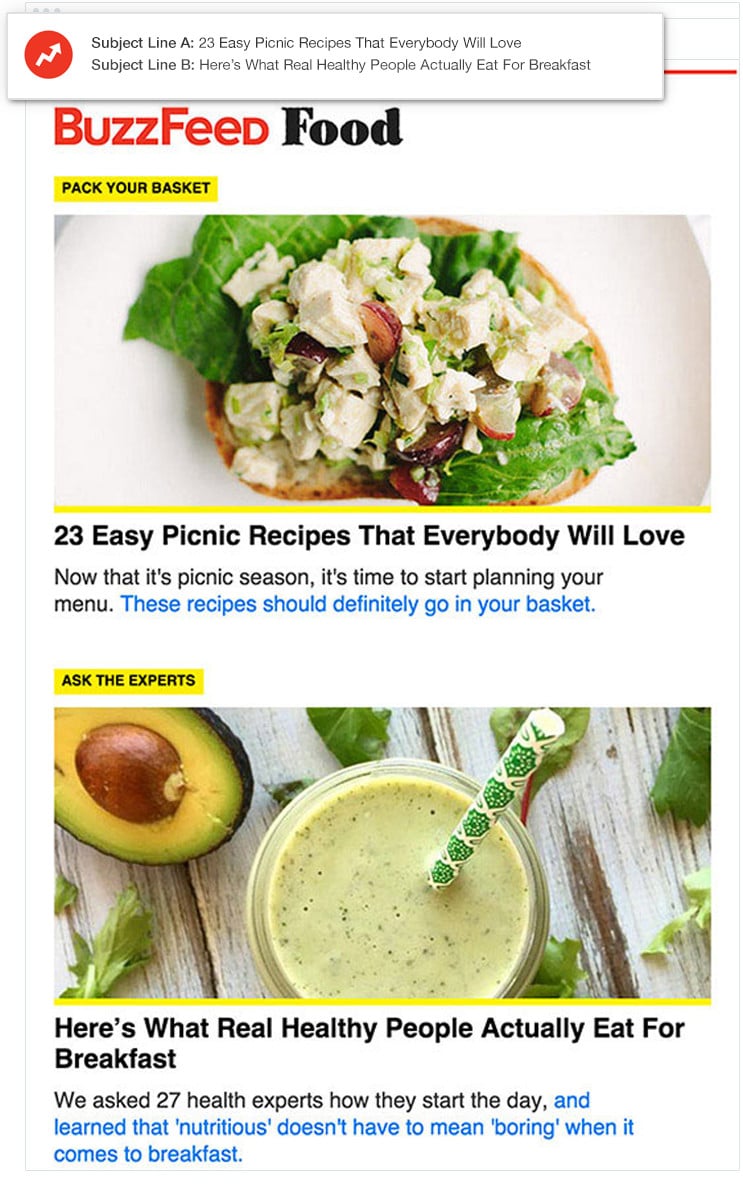How to dig deeper than vanity marketing metrics
When it comes to email marketing, open and click rates tend to get the lion’s share of people’s focus when it comes to marketing metrics. And with good reason—they are the most obvious indicators of success for email marketing.
After all, what difference do other points of data make if no one is bothering to open your email and read it?
Turns out, quite a bit. While you shouldn’t lose focus on those open and click-through rates, looking beyond vanity metrics—things that you can measure but don’t necessarily matter when it comes to making intuitive business decisions—can provide richer data and information that translates into meaningful action when it comes to your company’s marketing plans.
As Tim Ferris puts it: “Vanity metrics: good for feeling awesome, bad for action.”
According to Campaign Monitor’s 2018 Email Marketing Industry Report, vanity metrics like impressions, open rates, and views might look great in a presentation to leadership, but the truth is that executes don’t really care about them. They want to know how much you added to the pipeline, how many new donors you brought in, or how many people actually attended your event.
Every email has a goal outside the inbox. Ask yourself: how well are you achieving those goals and what are you doing to exceed them? But most importantly, do you know which marketing metrics are going to give you the most insight into those questions? And just how do you measure them?
We’re going to share the actionable marketing metrics you need to be tracking and how you can obtain them.
Actionable metrics: what they are and why they matter
Let’s say your most recent email announcing a new product launch garnered an open rate of 22% and a click-through rate of 3%. Great! But do these metrics tell you why these people might have opened your message and clicked on the content and what you can do to increase these numbers?
Unfortunately, no. But there are marketing metrics that can shed a bit more light on your customer’s thought-process and help you formalize a plan of action that capitalizes on this information. These are called actionable metrics, or metrics that tie specific and repeatable actions to observed results.
Here are four metrics you need to know and what insights they can provide.
1. Split-testing
In the context of email, split-tests, or A/B testing, is the concept of sending one version of your campaign to a subset of your subscribers, and a different variation to another subset with the goal of seeing which version performs best. Your tests can range from simple—such as switching out subject lines—to a bit more complex, which might include changing copy on CTA buttons or switching out the entire template the email is based on.
BuzzFeed includes multiples pieces of content in each of their newsletters. They A/B test featuring different pieces of content in the subject line in order to see which one drives the most opens.
A/B testing your campaigns is a great way to increase the open and click-through rates of your emails. But in order to have the highest chance of getting a positive increase in conversions from your A/B test, you need to have a strategic hypothesis about why a particular variation might perform better than the other.
Then, prioritize your testing—trying to test too many possibilities in one campaign can muddy your data. Finally, build on your learnings. Not every A/B test will be successful, but they will provide key insights into what your audience prefers (or doesn’t).
2. Conversion rate
While a click-through rate tells you how many people clicked your link, a conversion rate takes it one step further and tells you how many people clicked your link and completed a specific action, such as purchasing a product or filling out a form.
For example, say you sent out an email with a link that invites your customers to take advantage of your President’s Day sale. The conversion rate would tell you how many people clicked on the link and actually made a purchase.
Because conversion rates are directly tied to your call of action (i.e. checking out a sale, downloading an e-book, filling out a form) and therefore the overall goal of your email, conversion rates are an excellent marketing metric for determining the extent to which you’re achieving your goals and can provide unique insight into your return on investment.
There are a couple of ways you can increase the conversion rates of your emails. A catchy subject line, relevant pre-header text and strong CTAs go a long way to converting a customer. But timing is everything. Mapping your customer’s email marketing journey and automating emails accordingly can help boost a conversion rate. After all, companies who send automated emails are 133% more likely to send relevant messages that correspond with a customer’s purchase cycle.
One example of this type of message is the “welcome” email. This version from Warby Parker is automatically sent to customers after they sign up—right when they have their attention. The email then features targeted and clear CTAs to help guide them through the site.
3. Email sharing/forwarding rate
An email sharing or forwarding rate is the percentage of recipients who opted to forward your email onto a friend or shared the contents to social media.
On its face, this marketing metric may not seem crucial to your marketing plans or tactics. But actually, it’s an amazing metric to track because it tells you how many brand advocates you have. Developing brand advocates through email marketing is a great strategy, especially considering 81% of consumers' purchasing decisions are influenced by friends’ social media posts.
That’s not all this marketing metric can do—it can help you generate new leads. Tracking what content gets shared the most can be useful when planning future campaigns.
Birchbox not only makes their sharing CTA clear using a substantial amount of their template real estate, but they offer an incentive as well.
4. ROI calculation
Determining the overall return on investment for your campaign is a valuable metric for showcasing how valuable email marketing can be as a channel.
You can calculate this by taking the money you made in sales from the campaign minus the money you spent to execute the campaign divide it by the money invested in the campaign and then multiply that by 100. That will tell you your overall ROI.
While the average ROI on email marketing is an impressive $44 return on every $1 spent, with the right tracking, you can optimize your email campaigns and beat the average.
3 tools for tracking the metrics that matter
While you can obtain a few key metrics from your email platform’s in-house analytics—like open rates, click-through rates, bounces, and share—integrating a few tools can boost the amount and quality of data you receive.
1. Website tracking snippet
A website tracking snippet, for example, can give you the ability to analyze your customer’s behavior. Using this tool, you can track a subscriber’s movement from the moment they open your email to the time they make a purchase on your website through tracking platforms like Google Analytics.
Essentially, it’ll break down a customer’s website activity into usable pieces of information like click-through rates, bounces, conversions, and first-time visitors. You can even gather important customer data like the location of a subscriber. Using this information, you can fine-tune your segments for improved personalization—all you have to do is add a bit of code to your website.
2. Behavioral segment builder
A behavioral segment builder can complement a website tracking snippet by giving marketers the ability to create micro-segments based on a customer’s behavior. In fact, marketers have noted a 760% increase in revenue from segmented campaigns. So, let’s say you want to send an email to customers who purchased a certain product from your site in the last three months. A behavioral segment builder can help you do just that.
3. Segment-triggered automation
Segment-triggered automation, or automated journeys, is a great way to enhance a behavioral segment builder. Once you’ve created a segmented group, you can create a series of emails that are sent to subscribers based on triggered events, dates, or subscriber activity.
The best part: You don’t have to go into your account and send the email. Once you create a customer journey, it’s all done automatically for you. For example, if a customer signs up for your mailing list in-store, this will trigger an automatic welcome email to be sent to their inbox.
Using automated journeys, you can personalize this even further by sending a different email to VIP customers of your store. And personalized emails are a great way to improve customer satisfaction and increase ROI.
Wrap up
Vanity metrics only scratch the surface when it comes to providing you with actionable marketing data. Digging deeper into metrics like A/B testing, conversion rates, email sharing/forwarding rates, and ROI can give you detailed insights on consumer behavior that can translate to meaningful actions that lead to new customers and increased sales.
MOST RECENT ARTICLES
Want to engage your audience and grow your brand? Try Emma's robust easy-to-use product today.















